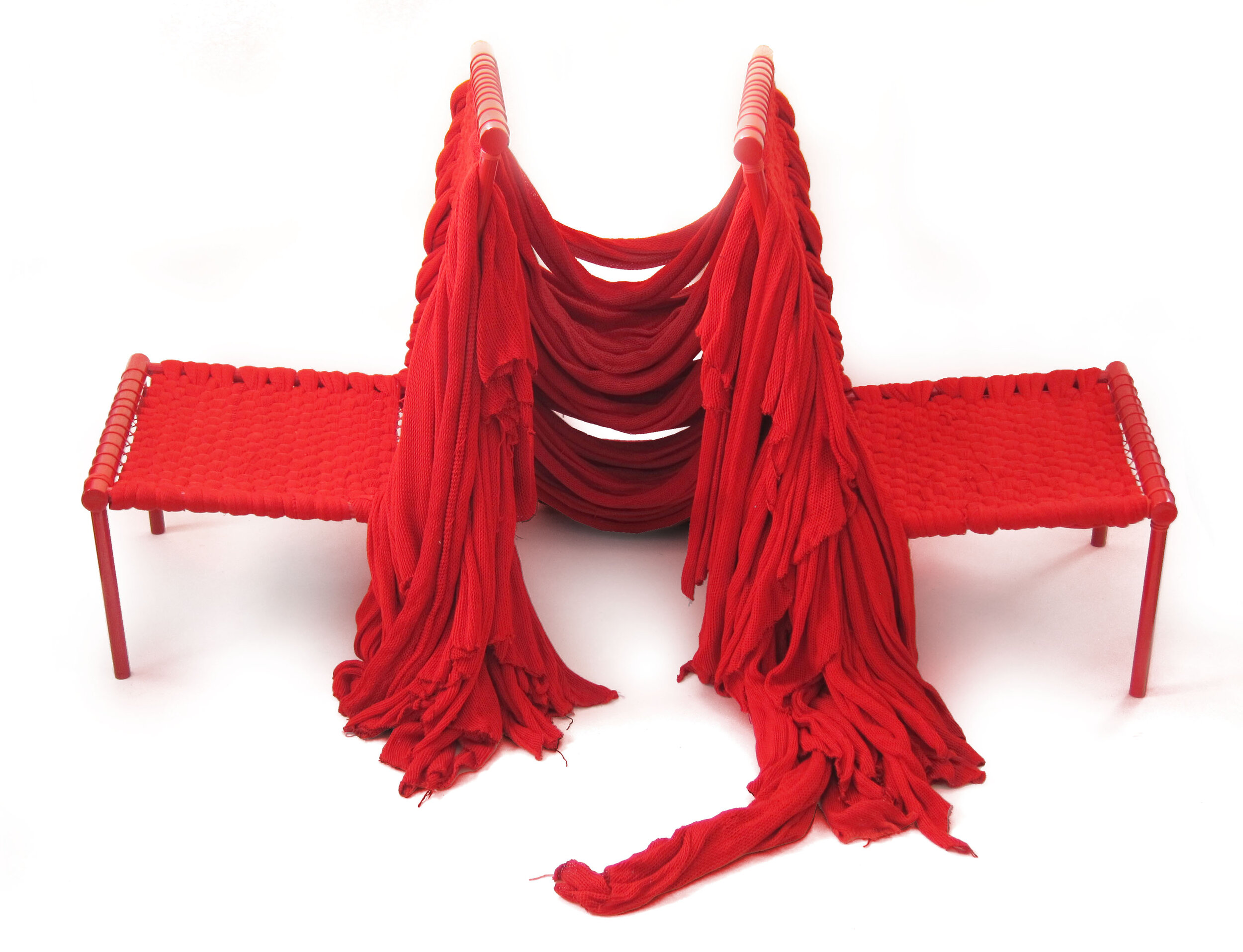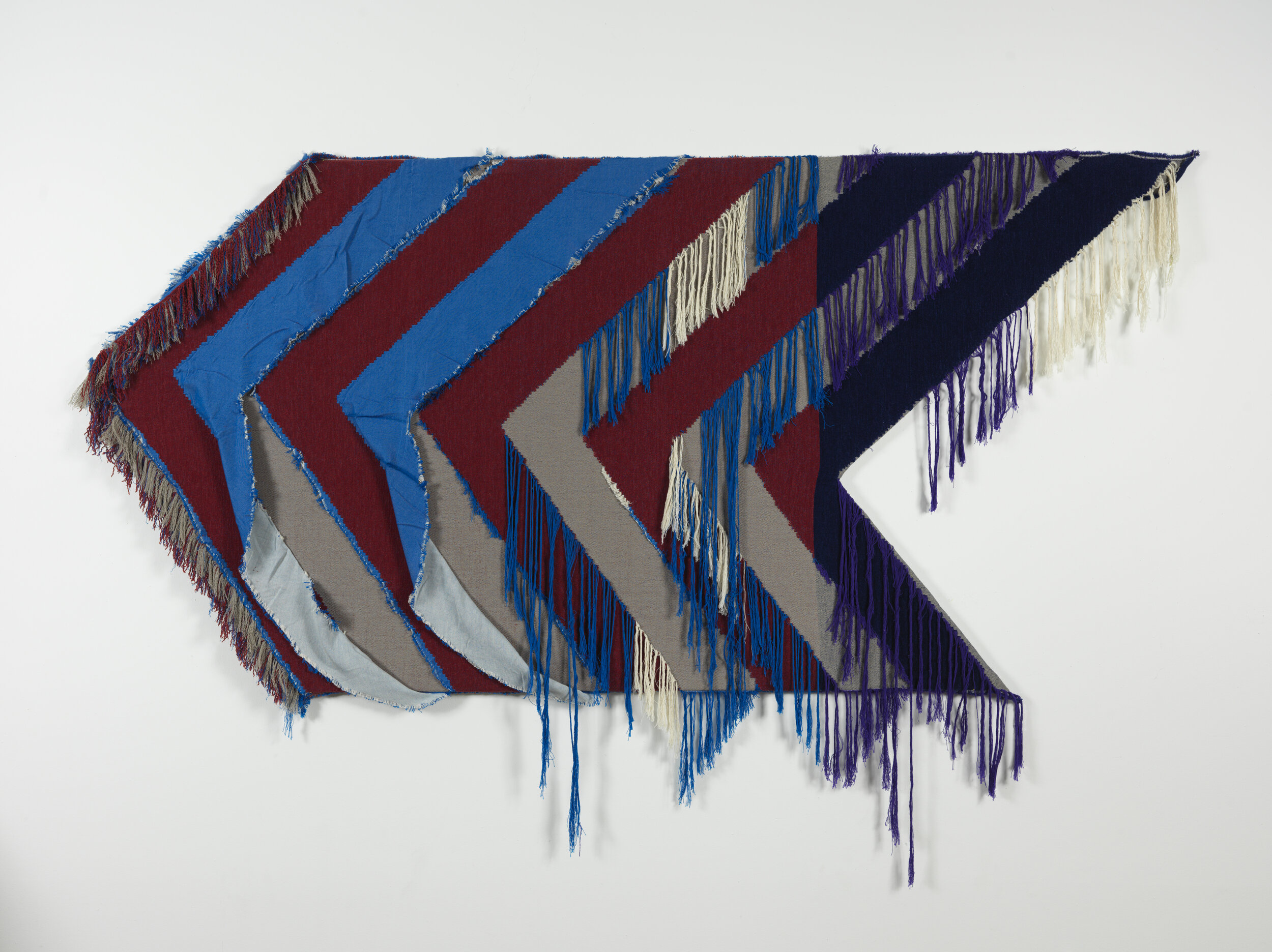Liz Collins
Name: Liz Collins
Studio location: Brooklyn, NY
Website / social links: lizcollins.com, @lizzycollins7
Loom type or tool preference: digital, automated jacquard
Years weaving: 30
Fiber inclination: silk
1. How did you discover weaving and was what your greatest resource as a beginner?
As a child I learned lots of kid weaving things like the potholder looms and so on. I loved making things so was endlessly immersed in crafty pursuits, weaving and otherwise.
I have a vivid memory of seeing a huge kente cloth exhibition at the National Museum of African Art in DC, and being deeply moved and inspired by that. Around the same time a big Junichi Arai show happened at RISD, just as I was entering the textile dept, so that radically affected how I saw weaving and fabric in general. I learned weaving at RISD, and my professor Lisa Scull had a huge influence on my weaving journey.
2. How do you define your practice – do you consider yourself an artist / craftsperson / weaver / designer / general creative or a combination of those? Is this definition important to you?
I am an artist and designer. Yes, I am proud to be both!
3. Describe your first experience with weaving.
My first experience of real loom weaving was in my beginning weaving class in college. I had transferred into textiles from the jewelry and light metals department which I left because I didn’t like working with metal. I still remember how thrilled I was when I was winding my first warp. I couldn’t believe that I had color in my hands and that it was malleable. I was enthralled by the repetition and technical aspects of the medium from the outset.
4. What is your creative process, from the initial idea to the finished piece? Are there specific weave structures, looms, or fibers that are important to your process?
My process is multifaceted and half the time is engaged with some sort of directive. I become a responder to presented variables. It could be a space, an idea, a problem to solve, or even a prompt to come up with my own idea. I often delve into materials as a way to put parameters around any given thing.
My work with the textile mills usually involves a series of steps :
Learning the mill’s capabilities and material options (usually involves a visit)
Contemplating what I want to create knowing those things
Exploring my archive of drawings & paintings, or making new works with the woven textile end goal in mind
Generating digital artwork to be translated by the mill
Lots of correspondence with the mill- can take weeks to months
Sampling /experiments
Revisions
Generating bigger pieces
Once the fabric arrives in my studio the general goal is to transform it through deconstruction, surface embellishment or some other sort of hand applied treatment













